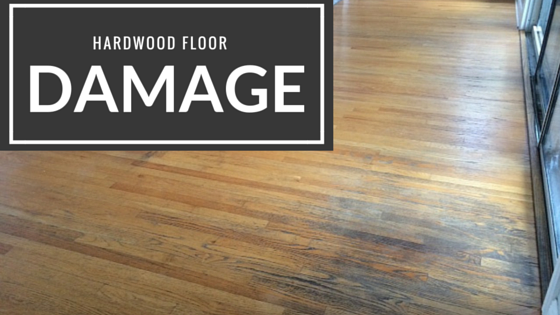Imagine walking into your beautiful living room, only to notice a gap appearing between your once-perfect hardwood floorboards. It’s a sight that can instantly dampen the mood, leaving you wondering if your floors are betraying you. While it’s not uncommon for hardwood floors to show some signs of movement over time, sudden separation can be concerning. But rest assured, understanding the causes and potential solutions can help you restore your floors to their former glory.

Image: www.seerfloor.com
Wood is a natural material, prone to changes in response to variations in temperature and humidity. This natural expansion and contraction can sometimes lead to gaps between planks, especially in older homes or areas experiencing significant climate fluctuations. This article delves into the whys and hows of hardwood floor separation, providing insights into common causes, preventive measures, and effective solutions. Whether you’re a seasoned homeowner or a curious newbie, this guide will equip you with the knowledge to address this common issue and maintain the beauty of your hardwood floors.
The Science Behind Hardwood Floor Separation
To understand why hardwood floors separate, we need to delve into the material’s inherent nature. Hardwood is known for its durability and aesthetic appeal, but it also exhibits a property called hygroscopicity. This means wood absorbs moisture from the surrounding air, leading to expansion, and releases moisture, leading to contraction.
Common Causes of Hardwood Floor Separation
While the natural expansion and contraction of wood is a factor, several contributing factors often lead to noticeable floor separation:
1. Fluctuating Humidity Levels
One of the most common culprits is dramatic shifts in humidity levels. During dry seasons or when heating systems are running, the air inside a home becomes drier, causing the wood to shrink. Conversely, during humid seasons or when running a humidifier, the wood absorbs moisture and expands. This constant fluctuation can create stress on the floorboards, eventually leading to gaps.

Image: www.reddit.com
2. Inadequate Installation
A poorly installed floor can also contribute to separation. Improper nailing, insufficient spacing between planks, or failure to properly account for expansion and contraction zones can lead to movement and gaps over time.
3. Age and Wear and Tear
Even with proper installation, time and wear and tear can take their toll on hardwood floors. As floors age, the wood becomes more susceptible to moisture fluctuations and structural changes, leading to separation.
4. Subfloor Issues
Problems with the subfloor, like unevenness, moisture buildup, or insufficient support, can also contribute to floor separation. An uneven subfloor can put undue stress on the hardwood, causing it to warp and gap.
Preventing Hardwood Floor Separation
Knowing the causes of floor separation can guide you in taking preventive measures:
1. Maintain Consistent Humidity Levels
Aim for a stable humidity level between 30% and 50%. Invest in a hygrometer to monitor the humidity in your house. Consider using a humidifier during dry seasons and a dehumidifier during humid seasons to balance the moisture levels.
2. Choose Flooring for Your Climate
If you live in an area with fluctuating humidity levels, consider selecting hardwood species known for their stability, such as oak, maple, or cherry. These species tend to be less susceptible to movement caused by moisture changes.
3. Seek Professional Installation
When installing hardwood floors, always hire a reputable and experienced contractor. Ensure they use appropriate installation techniques, leaving sufficient expansion gaps, and securely fastening the planks to the subfloor.
4. Protect Your Floor from Moisture
Avoid spills and promptly address leaks. A moisture barrier under the floorboards can help prevent water damage, which can lead to warping and separation. Wipe up any spills immediately and place mats or rugs in high-traffic areas to reduce the impact of moisture from footwear.
5. Regular Maintenance
Regular maintenance is key to keeping your hardwood floors in excellent condition. Vacuum or sweep your floors frequently to remove dust and debris, which can trap moisture. Mop periodically with a wood floor cleaner, but avoid excessive moisture.
Addressing Hardwood Floor Separation
If your hardwood floor is already exhibiting separation, don’t despair. It’s not always a significant issue, and several solutions can address it:
1. Small Gaps
Small gaps between planks can often be addressed with wood filler. Use a filler that matches the color of your floor and apply it carefully to fill the gaps. Allow it to dry completely before sanding and finishing the area for a seamless appearance.
2. Larger Gaps
For larger gaps, additional approaches might be needed:
- Re-nailing or Screwing: If the floorboards are loose, professional floor installers can re-nail or screw down the planks, securing them to the subfloor.
- Replacement: In cases of significant damage or warping, individual planks may need to be replaced. You’ll need to carefully remove the affected plank and install a new one that fits the existing layout.
- Floor Leveling: If the subfloor is uneven, you may need to level it before attempting to repair the floor. An experienced flooring contractor can address subfloor issues effectively.
3. Consult a Professional
If you’re unsure about the severity of the separation or how to address it, it’s always best to consult a professional flooring contractor. They can assess the situation, recommend appropriate solutions, and ensure the repair is done correctly.
Is It Normal For Hardwood Floors To Separate
Final Thoughts
Hardwood floor separation is a common issue, but understanding its causes and solutions can help you address it effectively. From maintaining consistent humidity levels to seeking professional installation and maintenance, several steps can prevent this issue or address it promptly. By being proactive, you can ensure your hardwood floors remain beautiful and functional for years to come. Remember, a well-maintained hardwood floor is an asset to any home, adding value and elegance to your living space.





